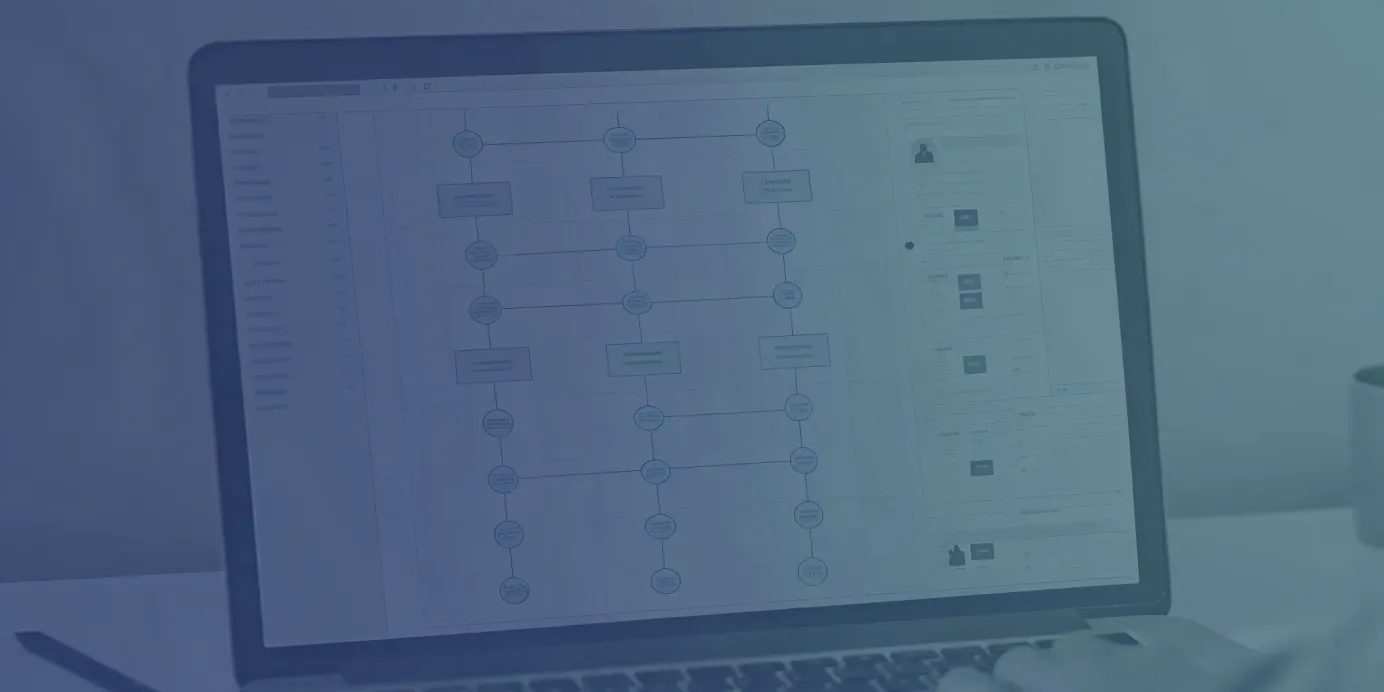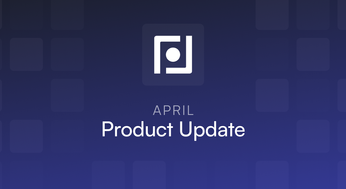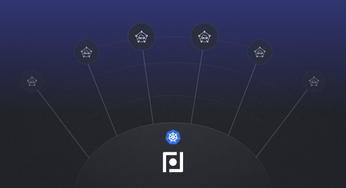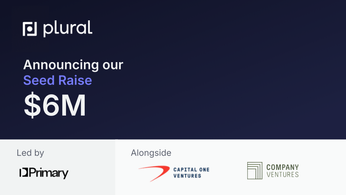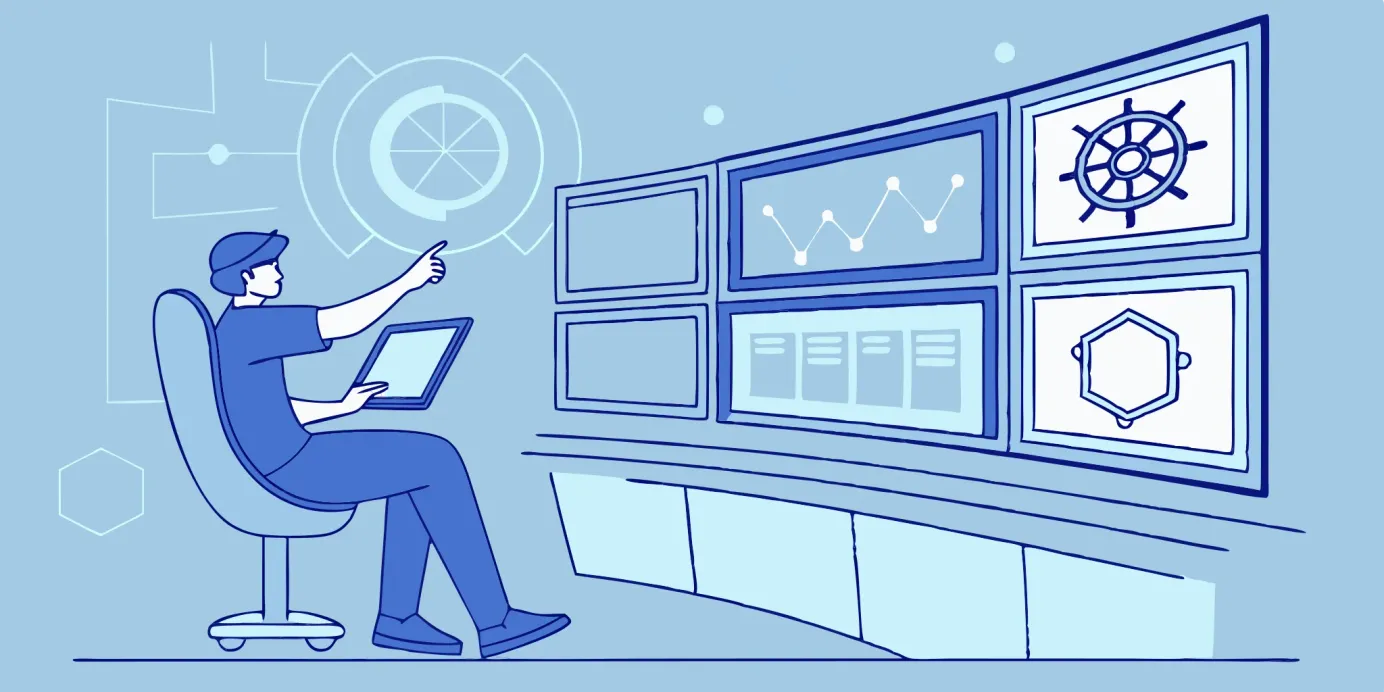
AI-Integrated DevOps: The Ultimate Guide
Learn how AI integrated DevOps can streamline workflows, enhance efficiency, and empower platform teams with actionable insights and automation strategies.
Table of Contents
Kubernetes. Managing it at scale is complex. It demands constant juggling of updates, security, troubleshooting, and the ever-increasing demands of modern software development. But what if you could automate those tedious, error-prone tasks? AI-powered DevOps offers that possibility. This post explores how AI integrated DevOps transforms the landscape, streamlining workflows and boosting team efficiency. We'll cover key benefits, essential features in AI tools, and how to integrate these powerful technologies into your existing workflows.
Key Takeaways
- AI-driven DevOps improves efficiency and frees up your team: Automating tasks like Kubernetes upgrades and proactively identifying issues allows engineers to focus on high-impact work, leading to faster releases and better software. Choose tools that offer intelligent automation and seamless integration with your current systems.
- Finding the right AI tools requires a strategic approach: Understand your team's needs and select tools that address your specific challenges. Consider scalability, security, and how well the tool fits into your existing workflows. Start with a focused implementation and gradually expand AI adoption.
- Track the right metrics to demonstrate AI's impact: Use KPIs like deployment frequency, change failure rate, and MTTR to measure the effectiveness of your AI implementation. High-quality data is essential for accurate insights and successful AI integration.
What is AI-Powered DevOps?
AI-powered DevOps integrates artificial intelligence (AI) into your existing DevOps processes. It's like adding a highly efficient assistant to your team. Using machine learning, you can automate repetitive tasks, optimize workflows, and improve how quickly you make decisions. This frees up engineers to focus on high-impact work, like developing new features and improving your product. AI handles the routine so your team can focus on innovation. This results in faster, more efficient, and more reliable software delivery. You'll see improvements in product quality and more effective systems management. AI can assist with various tasks, from monitoring and incident response to testing and deployment, creating a more streamlined development lifecycle. For example, AI can analyze logs to proactively identify potential issues or predict resource needs to optimize infrastructure costs. AI-powered DevOps aims to enhance efficiency and accelerate innovation.
DevOps' Evolution: Manual to AI-Driven
DevOps was a revolution. Before DevOps, development and operations teams often worked in silos. This meant long development cycles, infrequent releases, and a lot of friction when things went wrong. DevOps brought these teams together, emphasizing collaboration and automation to streamline the software development lifecycle. Early DevOps focused on automating individual tasks like testing and deployment, often using scripting and configuration management tools. This was a huge improvement, but still left room for growth. Managing infrastructure and applications remained complex and required significant manual effort.
As systems grew more complex, especially with the rise of Kubernetes, the limitations of manual processes became clear. Updates and maintenance became increasingly time-consuming and error-prone. Imagine keeping hundreds of microservices running smoothly across a distributed cluster—it's a lot to handle. This complexity created a demand for more sophisticated automation.
This is where AI comes in. AI and machine learning can automate not just individual tasks, but entire workflows. AI can analyze massive amounts of data to identify patterns, predict potential problems, and even suggest solutions. As GitLab notes, AI transforms DevOps by optimizing processes for speed, accuracy, and reliability. This shift toward AI-powered DevOps allows teams to move from reactive problem-solving to proactive management. Instead of scrambling to fix issues after they occur, AI helps identify and address them before they impact users, as highlighted by Amazon Web Services.
This evolution isn't just about efficiency; it's about enabling innovation. By automating tedious tasks and reducing errors, AI frees up DevOps teams to focus on higher-value work like developing new features and improving the customer experience. The future of AI in DevOps, according to GitLab, includes autonomous optimization and improved code quality, suggesting a more streamlined and intelligent future for software development. However, integrating AI into DevOps isn't simple. Forte Group points out the challenges of cultural adaptation within organizations adopting AI. Teams need to embrace new tools, processes, and ways of working to fully realize the benefits of AI-powered DevOps.
Why Use AI in DevOps?
Integrating AI into your DevOps practices can significantly improve your team's efficiency, allowing them to focus on strategic initiatives rather than constant firefighting. Let's explore some key advantages:
Automate Issue Detection and Resolution
AI excels at identifying patterns and anomalies in large datasets. In DevOps, this translates to automatically detecting issues in real-time, often before they impact users. Instead of relying on reactive monitoring and manual troubleshooting, AI can proactively pinpoint the root cause of problems, suggest solutions, and even automate remediation. This shift towards proactive issue management minimizes downtime, reduces operational costs, and frees up your team. As AWS points out in their overview of AI for DevOps, machine learning technologies are central to automating processes and proactively identifying issues, ultimately accelerating innovation.
Predictive Analytics for Optimized Performance
Beyond reactive problem-solving, AI empowers DevOps teams with predictive analytics. By analyzing historical data and current trends, AI can forecast potential performance bottlenecks, predict future resource needs, and optimize resource allocation. This proactive approach ensures your infrastructure runs at peak performance and helps you avoid costly downtime or performance degradation. GitLab highlights the potential of AI to improve product quality and system management, paving the way for autonomous optimization and improved code quality.
Better Collaboration with AI-Driven Decisions
AI isn't just about automation; it's also about augmenting human capabilities. AI-powered tools can facilitate better collaboration within DevOps teams by providing shared insights, automating routine tasks, and streamlining communication. This allows teams to make more informed, data-driven decisions, leading to faster and more effective problem-solving. Companies like Kubiya are developing AI tools that function as "teammates," fostering a collaborative approach to automation and highlighting the growing role of AI in enhancing human capabilities.
Specific AI Benefits in DevOps
Increased Speed and Efficiency
AI acts like a turbocharger for your DevOps workflows. By automating repetitive tasks such as Kubernetes deployments, AI eliminates manual effort and accelerates processes, leading to faster software releases. This increased speed translates directly to faster time-to-market and a quicker feedback loop, allowing you to iterate and innovate more rapidly. As GitLab points out, this increase in speed and efficiency is a core benefit of AI in DevOps.
Improved Accuracy and Consistency
Humans are prone to errors. But in DevOps, even small errors can have significant consequences. AI, on the other hand, excels at precision and consistency. By automating tasks like testing and deployment, AI eliminates human error and ensures consistent results. This leads to more reliable software releases and reduces the risk of costly rollbacks or outages. Automated testing and other AI-powered processes, as highlighted by GitLab, are key to this improved accuracy and consistency.
Better Resource Management
Optimizing cloud resources is a constant challenge. Over-provisioning leads to wasted spending, while under-provisioning causes performance issues. AI can analyze usage patterns and predict future needs, allowing you to dynamically allocate resources and optimize spending. This intelligent resource management saves money and ensures your applications always have the resources they need to perform optimally. AI’s ability to optimize cloud resources and prevent waste, as noted by GitLab, is a significant advantage.
Enhanced Security
Security is paramount in DevOps. AI can significantly strengthen your security posture by automating threat detection and response. AI-powered tools can analyze logs, network traffic, and other data to identify suspicious activity and potential vulnerabilities in real-time. This proactive security approach helps you stay ahead of threats and minimize the impact of security incidents. AI's role in enhancing security within DevOps, as emphasized by GitLab, is becoming increasingly critical.
Detailed AI Applications in DevOps
CI/CD Automation
AI can automate the entire CI/CD pipeline, from building and testing code to deploying and monitoring applications. This end-to-end automation accelerates software delivery and reduces the risk of human error. AI-driven CI/CD, as explained by GitLab, streamlines the entire software delivery process.
Automated Testing and Code Suggestions
AI-powered tools can automatically generate test cases, analyze code for potential bugs, and even suggest code improvements. This helps developers write better code faster, reducing the time spent on debugging and testing. AI assists developers with more efficient coding practices, as highlighted by GitLab.
Improved Monitoring, Alerting, and Anomaly Detection
AI analyzes monitoring data to identify anomalies and potential issues before they impact users. This proactive monitoring allows for faster incident response and minimizes downtime. AI-powered monitoring, according to GitLab, improves system stability by proactively identifying potential problems.
Streamlined Code Reviews and Root Cause Analysis
AI can assist with code reviews by identifying potential issues and suggesting improvements. It also helps with root cause analysis by analyzing logs and other data to pinpoint the source of problems. AI streamlines debugging and code review processes, as noted by GitLab.
Enhanced Security Practices and Vulnerability Management
AI analyzes code for security vulnerabilities and suggests fixes. It can also help automate security testing and vulnerability management processes. AI enhances security practices by identifying weaknesses and suggesting fixes, according to GitLab.
Automating Routine Tasks and Incident Management
AI automates routine tasks like code deployment, testing, and infrastructure management. It also assists with incident management by automating alerts, identifying root causes, and suggesting solutions. Automating these tasks with AI frees up DevOps teams for more strategic work, as discussed in a Medium article.
Optimized Development Processes and Continuous Testing
AI optimizes development processes by identifying bottlenecks and suggesting improvements. It also enhances continuous testing by automatically generating test cases and identifying areas needing more testing. A Medium article discusses how AI improves testing through automated test case generation and targeted testing focus.
Generative AI in DevOps
Key Benefits and Use Cases
Generative AI expands AI's capabilities in DevOps. It can generate code, configurations, and even entire infrastructure setups, significantly accelerating development and deployment. This is particularly useful for tasks like creating boilerplate code, generating test data, or designing new application architectures. DevOps.com explains how generative AI automates tasks, improves efficiency, and enhances decision-making within the DevOps pipeline.
Addressing the Challenges of Generative AI
While generative AI offers tremendous potential, it's important to be aware of the challenges. Data quality, security, and the need for new skills are all important considerations. High-quality training data is crucial for accurate and reliable results from generative AI models. Security is also paramount, as generative AI can potentially introduce new security vulnerabilities. Teams need to develop the skills to effectively use and manage generative AI tools. DevOps.com notes that successful integration of generative AI requires careful planning and addressing potential challenges related to data, security, and employee skills.
Must-Have AI-Powered DevOps Tool Features
Choosing the right AI-powered DevOps tools can feel overwhelming. To help you narrow down your options, focus on these key features:
Intelligent Automation in DevOps
Effective AI-powered DevOps tools go beyond basic automation. They use machine learning to intelligently automate complex tasks, freeing your team from tedious manual work. Think automated dependency management and streamlined upgrades. As GitLab notes, "AI is transforming DevOps by automating and optimizing software development and delivery processes." This intelligent automation improves speed and accuracy, reducing the risk of human error and allowing your team to focus on higher-value work. Look for tools like Plural that can handle tasks like infrastructure provisioning, testing, and deployment with minimal human intervention.
Seamless Workflow Integration
A good AI-powered DevOps tool should fit into your existing workflows, not disrupt them. Seamless integration with your current tools and processes is crucial. This Kubiya.ai guide emphasizes the importance of integrations for quick adoption. This means looking for tools that offer APIs, webhooks, and integrations with popular platforms like Kubernetes. The easier the tool integrates, the faster your team can realize its benefits.
Effective Analysis and Reporting
Data analysis is at the heart of AI-driven improvements. Your chosen tool should provide robust analytics and reporting capabilities. This includes real-time insights into your DevOps pipeline, performance metrics, and potential bottlenecks. GitLab highlights how AI can "help DevOps teams improve product quality and manage systems more effectively." Look for tools that offer customizable dashboards and reporting features, allowing you to track the metrics that matter most to your team.
Scaling AI-Powered DevOps Solutions
Your DevOps tools need to scale with your business. Choose a solution that can handle increasing workloads and data volumes without compromising performance or exceeding your budget. Consider cloud-based solutions with flexible pricing models, like the pay-as-you-go structure often used for AWS AI services, discussed in this article on cost management for AI projects. This lets you scale resources up or down as needed, ensuring you only pay for what you use. Check out Plural's pricing for an example of flexible options.
Leading AI-Powered DevOps Platforms
This section explores some leading AI-powered DevOps platforms and tools, highlighting their key features and capabilities. Remember, the right choice for your team depends on your specific needs and existing infrastructure.
Plural: Streamlined Kubernetes
Plural simplifies Kubernetes management by automating complex tasks and streamlining workflows. It excels at reducing upgrade cycles, freeing your team from tedious manual processes. Using pre-built integrations, teams can quickly onboard and begin managing their Kubernetes deployments. This intent-based approach to automation allows for faster deployments and improved operational efficiency. For platform engineering teams seeking a comprehensive Kubernetes management solution, exploring Plural is worthwhile. Book a demo to see how Plural can work for your organization, or check out Plural's pricing. Ready to get started? Log in to your Plural account.
Plural's AI-Driven Approach to Kubernetes
Plural simplifies Kubernetes management by automating complex tasks and streamlining workflows. We excel at reducing upgrade cycles, freeing your team from tedious manual processes so you can focus on building and shipping features. Using pre-built integrations, teams can quickly onboard and begin managing their Kubernetes deployments. This intent-based approach to automation allows for faster deployments and improved operational efficiency. Our platform leverages AI to analyze your Kubernetes deployments, identify potential issues, and suggest optimizations, effectively acting as an intelligent assistant for your team. This proactive approach to management helps prevent problems before they impact your users.
Key Features and Benefits of Using Plural
Plural offers a range of features designed to streamline your Kubernetes workflows and improve your team's efficiency. Our intelligent automation goes beyond basic scripting, using machine learning to optimize complex tasks like dependency management and upgrades. This reduces the risk of human error and frees up your team for more strategic work. Effective AI-powered DevOps tools, as GitLab notes, "transform DevOps by automating and optimizing software development and delivery processes." Plural seamlessly integrates with your existing tools and processes through APIs, webhooks, and integrations with popular platforms like Kubernetes, ensuring a smooth transition and minimizing disruption. We also offer robust analytics and reporting capabilities, providing real-time insights into your DevOps pipeline, performance metrics, and potential bottlenecks. This data-driven approach empowers your team to make informed decisions and optimize performance. Plural is a cloud-based solution with flexible pricing, allowing you to adapt to changing workloads and data volumes without overspending.
AWS AI-Powered DevOps Tools
Amazon Web Services offers a suite of AI-powered tools designed to enhance DevOps practices. Services like Amazon DevOps Guru leverage machine learning to automatically detect and diagnose operational issues, improving application availability and reducing downtime. This proactive approach to incident management helps teams address potential problems before they impact users. For teams already invested in the AWS ecosystem, exploring their AI-powered DevOps tools is a logical next step. Consider the cost implications as AWS AI services typically operate on a pay-as-you-go model. The announcement of Amazon DevOps Guru provides further insight into their commitment to AI-driven operational excellence.
Other Top AI DevOps Tools
Beyond Plural and AWS, a growing number of tools are incorporating AI to enhance DevOps workflows. These tools often focus on empowering development teams through conversational AI and self-service capabilities, democratizing access to complex operations. This shift toward AI-powered automation aims to improve efficiency, reduce errors, and foster better collaboration within DevOps teams. As the DevOps landscape continues to evolve, exploring these emerging tools can provide valuable insights. Platforms like Kubiya, for example, use AI to reinvent how organizations build software, offering a glimpse into the potential of AI-powered personal DevOps assistants. Learn more about how Kubiya is revolutionizing DevOps and how they are using AI as teammates for operations. Consider the broader impact of AI in DevOps as you explore these new tools.
Jenkins X
Jenkins X leverages AI to automate repetitive tasks, freeing up human workers for more strategic contributions. This includes automating code deployments and testing, streamlining the CI/CD pipeline, and reducing the manual overhead associated with these processes. By offloading these routine tasks to AI, teams can focus on higher-value activities like developing new features and improving product quality. As Manoj Kumar notes in his guide on Leveraging Artificial Intelligence in DevOps, tools like Jenkins X are key players in this automation-driven transformation.
Dynatrace
Dynatrace uses AI to predict system problems before they escalate into major incidents, minimizing downtime and ensuring optimal performance. By analyzing vast amounts of data, Dynatrace can identify patterns and anomalies that indicate potential issues, allowing teams to proactively address them before they impact users. This predictive capability is crucial for maintaining service reliability and reducing the costs associated with unplanned outages. Kumar highlights Dynatrace in his AI in DevOps guide as a tool that excels in predictive problem-solving.
PagerDuty
PagerDuty uses AI to accelerate problem resolution by automating incident response workflows. It can automatically identify and categorize issues, route alerts to the appropriate teams, and even suggest potential solutions based on past incidents. This intelligent automation reduces the time it takes to resolve issues, minimizing downtime and improving overall system reliability. Kumar also mentions PagerDuty in his comprehensive guide, emphasizing its role in speeding up problem-solving.
GitHub Copilot
GitHub Copilot is an AI-powered coding assistant that helps developers write code more efficiently. It can suggest code completions, identify potential bugs, and even generate entire functions based on natural language descriptions. This reduces the cognitive load on developers, allowing them to focus on the logic and architecture of their code rather than syntax and boilerplate. Kumar's article also highlights GitHub Copilot as a prime example of how AI is assisting programmers.
Testim
Testim uses AI to enhance the software testing process. It can automatically generate test cases, identify areas that need more thorough testing, and even predict the likelihood of bugs based on code changes. This intelligent approach to testing improves test coverage, reduces the time and effort required for testing, and ultimately leads to higher quality software. Kumar mentions Testim, and its AI-powered enhancements to Selenium, in his DevOps guide.
Splunk
Splunk uses AI to enhance security by detecting threats in real-time. By analyzing machine-generated data, Splunk can identify unusual patterns and anomalies that may indicate a security breach. This proactive approach to security monitoring helps organizations respond to threats quickly and effectively, minimizing the potential damage from cyberattacks. Kumar's guide also highlights Splunk's role in real-time threat detection.
Choosing the Right AI-Powered DevOps Solution
Choosing the right AI-powered DevOps solution requires careful consideration of your organization's specific needs, the tool's compatibility with your existing systems, and its ability to scale with your future growth. It's not a one-size-fits-all situation, so take your time to evaluate your options.
Assessing Your DevOps Needs
Before you start comparing tools, take stock of your current DevOps processes. Where are your biggest bottlenecks? Are you struggling with slow release cycles, complex deployments, or difficulty managing your Kubernetes clusters? Pinpointing these challenges will help you identify the areas where AI can have the biggest impact. For example, if your team is bogged down by manual tasks, prioritize solutions with robust automation. Keep in mind that integrating AI into your workflows requires a cultural shift. Your team needs to be ready to embrace new ways of working. As highlighted in Forte Group's research, cultural adaptation is key for successful AI adoption.
Evaluating Tool Compatibility
Once you understand your needs, you can start evaluating different tools. Look for solutions that integrate seamlessly with your existing workflows and tech stack. For instance, if your team uses Kubernetes, a platform like Plural might be a good fit, as it offers streamlined Kubernetes management. Consider the specific features of each tool. Does it offer the automation capabilities you need? Can it handle the complexity of your deployments? Kubiya offers intent and action-based experiences to kickstart automated workflows. Also, think about the user experience. Is the tool intuitive and easy to learn? A complicated tool can hinder adoption and slow down your progress. The AI-powered editor in tools like Kubiya, discussed in this DevOps Digest article, can streamline automation creation and management, making the transition smoother.
Planning for Scalability and Growth
Finally, consider the long-term implications of your choice. As your organization grows, your DevOps needs will change. Choose a solution that can scale to meet future demands. This includes not only the technical capabilities of the tool but also the pricing model. Some AI services, like those from AWS, use a pay-as-you-go model, which can affect your costs as your usage grows. Understanding these pricing structures upfront helps you avoid unexpected expenses. As AWS points out in their cost management guide, factors like data volume and algorithm complexity can influence pricing. The goal is to choose a solution that supports your current needs while enabling future innovation and growth.
Implementing AI-Powered DevOps
Successfully integrating AI into your DevOps practices requires careful planning and execution. Here’s how to make the transition smooth and effective.
Gradual vs. Full-Scale AI Adoption
Don't feel pressured to overhaul your entire system at once. Pinpoint specific areas where AI can offer the most immediate value. Perhaps you're struggling with slow Kubernetes upgrade cycles—start there. Focus on automating a single process, like deployments or testing. Once you see positive results, gradually expand AI adoption to other areas of your DevOps workflow. This iterative approach, recommended by GitLab, allows your team to adapt and learn along the way, minimizing disruption and maximizing the chances of success. A measured rollout also helps address the cultural shift that often accompanies new technology, as highlighted by Forte Group. Consider a platform like Plural to manage your Kubernetes deployments and streamline your operations.
Team Training for AI-Powered DevOps
AI and machine learning tools require specialized knowledge. Assess your team's current skill set and identify any gaps. Investing in training programs or bringing in experts can empower your team to effectively use and manage these new tools. This might involve learning new programming languages, understanding AI algorithms, or becoming proficient with specific AI-powered platforms like Plural. Focus on developing those uniquely human skills—critical thinking, problem-solving, and collaboration—that complement AI capabilities, as suggested by DevOps.com.
Managing Data Quality for AI
AI thrives on data. The accuracy and completeness of your data directly impacts the effectiveness of your AI-powered tools. Before implementing any AI solutions, thoroughly audit your data sources. Identify and address any inconsistencies, inaccuracies, or gaps. Establish clear data governance policies and procedures to ensure data quality is maintained over time. This includes regular data cleansing, validation, and monitoring. High-quality data is the foundation of successful AI integration in your DevOps pipelines, as emphasized by various sources. A platform like Plural can help streamline this process by providing centralized data management and analysis features.
AI-Powered DevOps: Costs and ROI
Implementing AI in your DevOps practices requires a clear understanding of the associated costs and potential return on investment (ROI). Let's break down the financial aspects to help you make informed decisions.
Pricing and Licensing for AI DevOps Tools
AI services generally come with various pricing structures, depending on the vendor and the specific features offered. Cloud-based AI services, like those from AWS and Azure, often use a pay-as-you-go model. You pay for what you use, which can fluctuate based on factors like the type of service, data volume, and algorithm complexity. AWS, for example, offers tiered pricing that can become more cost-effective as your usage increases. Understanding your team's needs and predicted usage is key to optimizing costs with this model. Azure DevOps provides a tiered model with options ranging from a free tier for smaller teams to a basic paid plan for larger groups. Compare Azure DevOps pricing to get a better sense of potential costs.
Commercial AI platforms often involve licensing fees, which can range from around $10,000 annually for basic features to upwards of $100,000 for enterprise-grade solutions. While open-source frameworks are generally free to use, keep in mind that some may require commercial licenses for specific functionalities. This is a crucial factor to consider when evaluating different platforms. This resource offers a helpful overview of AI pricing.
Calculating Potential ROI of AI in DevOps
Figuring out the potential ROI of AI in DevOps involves considering the total cost of creating and implementing your AI solutions. This includes expenses like assembling your team of data scientists, machine learning engineers, software developers, project managers, and QA experts. Project duration significantly impacts cost; longer timelines typically mean higher expenses due to extended resource utilization and potential shifts in technology or project requirements. This article provides insights into estimating AI development costs.
Experimentation is also a factor. Trying out different AI models and data preprocessing techniques helps identify the most cost-effective solutions for your specific needs. This iterative approach can lead to more efficient resource management when training, customizing, and running your AI models, ultimately contributing to a better ROI. AWS offers insights into generative AI cost optimization. Remember that platforms like Plural, with its focus on streamlined Kubernetes management, can contribute to cost savings by reducing upgrade cycles and improving operational efficiency. Check out Plural's pricing and book a demo to see how it can fit into your ROI calculations.
Overcoming AI DevOps Adoption Challenges
Successfully integrating AI into your DevOps practices requires careful planning and execution. Let's explore some common hurdles and how to address them.
Data Security and Privacy in AI DevOps
AI-driven tools thrive on data. The insights they deliver are directly tied to the quality and quantity of information they receive. As highlighted in this DevOps.com article, insufficient data quality can hinder AI performance. This makes data security and privacy paramount. Protecting sensitive information is crucial, especially as AI analyzes your operational data. Establish robust security protocols and ensure compliance with relevant data privacy regulations. A proactive approach to data governance will build a strong foundation for AI adoption. This industry report emphasizes the importance of these measures when integrating AI into DevOps workflows.
Managing the AI Learning Curve
Introducing AI tools often requires a shift in mindset and skillset. Integrating these tools into existing pipelines can be complex, especially with legacy systems and diverse technologies already in place. This article on integrating AI into DevOps discusses the complexities this integration can present. Teams need time and resources to adapt to new processes and learn how to effectively use AI-powered tools. Investing in training programs and providing ongoing support can ease this transition. Addressing the potential skills gap, as discussed in this Collabnix article, is essential for successful AI integration. Fostering a culture of continuous learning and adaptation is key to maximizing the benefits of AI in your DevOps practices. This report reinforces the importance of cultural adaptation within organizations adopting AI-powered tools.
The Future of AI in DevOps
The integration of AI into DevOps is still nascent, but its transformative potential is vast. As AI and machine learning technologies mature, expect even more profound changes in how software is developed, deployed, and managed.
Predictions and Emerging Trends
AI's role in predicting and managing resources will become increasingly sophisticated. As GitLab predicts, AI-powered monitoring tools will move beyond anomaly detection to anticipate potential bottlenecks and proactively optimize resource allocation. Expect more advanced generative AI capabilities, automating tasks from code generation to infrastructure provisioning, driving greater efficiency and innovation within DevOps pipelines.
Impact on DevOps Engineers and Skillsets
Contrary to some anxieties, AI will augment, not replace, DevOps engineers. AI excels at automating routine tasks, but human expertise remains essential for complex problem-solving, strategic thinking, and nuanced judgment. DevOps engineers will need to adapt by acquiring skills in AI and data analytics to effectively leverage these new tools. This evolving skillset will be crucial for navigating the changing DevOps landscape, empowering engineers to focus on higher-level tasks, driving innovation, and accelerating the software development lifecycle.
Ethical and Legal Implications
As AI becomes further integrated into DevOps, organizations must address the ethical and legal implications. Data privacy, potential bias in AI models, and the responsible use of AI-driven insights require careful consideration. Establishing clear guidelines and best practices for ethical AI implementation is crucial for building trust and ensuring responsible innovation.
AI-Driven Security and AI-Enabled Microservices
AI is poised to revolutionize security within DevOps. AI-driven security tools can detect and respond to threats in real time, significantly reducing the risk of breaches and minimizing the impact of security incidents. AI will also play a key role in managing the complexity of microservice architectures. By analyzing vast amounts of data, AI can identify patterns, predict potential problems, and even suggest solutions, optimizing the performance and resilience of microservices.
Best Practices for AI Implementation in DevOps
Successfully integrating AI into DevOps requires a strategic approach. Here are some best practices:
Start Small and Involve Everyone
Begin with a small, focused project to gain practical experience and demonstrate AI's value within your team. Involve all stakeholders—developers, operations engineers, data scientists, and security experts—to ensure buy-in and foster collaboration.
Continuous Evaluation and Transparency
Regularly evaluate the performance of your AI tools and adapt as needed. Maintain transparency about how AI is used and its impact on DevOps processes to build trust and encourage wider adoption.
Data Quality, Security, and Human Oversight
High-quality data is essential for accurate AI-driven insights. Prioritize data quality and security, implementing appropriate governance measures. Maintain human oversight of AI-driven processes to ensure responsible and ethical use.
Choosing the Right Tools and Continuous Learning
Select AI tools aligned with your specific needs that integrate seamlessly with your existing DevOps ecosystem. Foster a culture of continuous learning to keep pace with the rapidly evolving AI landscape.
Collaboration, Training, and Performance Monitoring
Foster collaboration between development, operations, and data science teams. Invest in training to equip your team with the skills to effectively use AI tools. Continuously monitor the performance of your AI-powered DevOps processes to identify areas for improvement and ensure optimal ROI.
Salary Information for AI DevOps Engineers
The increasing demand for AI expertise in DevOps is reflected in competitive salaries. Glassdoor estimates salaries for AI DevOps engineers range from $114,000 to $159,000, highlighting the growing value of this specialized skillset.
Measuring AI-Powered DevOps Success
So, you've adopted AI-powered DevOps tools. How do you know they're actually working? The key is to identify and track the right Key Performance Indicators (KPIs). These metrics offer tangible insights into the effectiveness of your AI implementation and help demonstrate a return on investment. Let's explore some of the most critical KPIs to consider:
Tracking Speed and Efficiency
One of the primary benefits of AI in DevOps is increased automation, leading to faster project completion and fewer errors (GitLab). Therefore, tracking metrics like deployment frequency and lead time for changes is crucial. How often are you deploying new code? How long does it take for a code change to go from commit to production? A noticeable improvement in these areas suggests your AI tools are streamlining your processes. Similarly, monitor your change failure rate. A decrease indicates improved accuracy and reliability in your deployments.
Measuring Quality and Reliability
AI can significantly improve software quality by automating testing and identifying potential issues early (GitLab). Keep a close eye on your defect rate. Are you seeing fewer bugs reported post-release? Also, consider measuring Mean Time To Recovery (MTTR) (AWS). This metric reflects how quickly your team can resolve issues and restore service when incidents occur. A lower MTTR demonstrates improved resilience and responsiveness. Don't forget user feedback! Gathering data on customer satisfaction can provide valuable insights into the overall quality and impact of your software releases.
Proactive Issue Detection with AI
AI's ability to proactively identify and address issues is a game-changer (AWS). Track the number of issues identified proactively by your AI tools. This metric highlights the effectiveness of your AI in preventing problems before they impact users. You can also measure the percentage of issues resolved automatically. This shows how much manual intervention is required and further quantifies the efficiency gains from AI.
Data Quality and Volume in AI DevOps
Remember, the success of your AI tools depends heavily on the data they receive (DevOps.com). Monitor the quality of your data and ensure it's accurate, complete, and relevant. Also, track the volume of data processed by your AI tools. This can help you understand how effectively your AI is leveraging available information to generate insights and automate processes. By consistently monitoring these KPIs, you can gain a clear understanding of the impact of AI on your DevOps processes, identify areas for improvement, and demonstrate the value of your AI investments.
Related Articles
- Plural | PR automation-driven pipelining
- Plural | Continuous Deployment
- Plural | Secure, self-hosted applications in your cloud
- Plural | Cluster Upgrade Assistant
- Plural | Terraform stacks
Frequently Asked Questions
Is AI-powered DevOps right for my team?
AI-powered DevOps offers significant advantages, especially for teams managing complex systems or experiencing rapid growth. If your team struggles with slow release cycles, complex deployments, or difficulty managing Kubernetes, AI can be a game-changer. However, adopting AI requires a cultural shift and investment in training. Assess your team's readiness and existing infrastructure to determine if AI-powered DevOps aligns with your current needs and future goals. If you're primarily working with smaller, less complex projects, the benefits of AI might not outweigh the implementation effort.
How do I choose the right AI-powered DevOps tools?
Start by identifying your team's biggest pain points. Are you struggling with slow deployments, frequent errors, or difficulty managing your infrastructure? Once you understand your needs, look for tools that integrate seamlessly with your existing workflows and offer the specific features you require. Consider factors like ease of use, scalability, and pricing. Don't be afraid to start small. Begin by automating a single process and gradually expand your use of AI as your team gains experience and confidence.
What are the key features to look for in an AI-powered DevOps platform?
Look for tools that offer intelligent automation beyond basic scripting. The platform should be able to handle complex tasks with minimal human intervention. Seamless integration with your existing tools and processes is crucial for a smooth transition. Robust analytics and reporting capabilities are essential for tracking progress and identifying areas for improvement. Finally, ensure the platform can scale to meet your future needs without breaking the bank.
How do I get started with AI-powered DevOps?
Begin by educating yourself and your team about the potential benefits and challenges of AI in DevOps. Identify a specific area where AI can offer the most immediate value, such as automating deployments or improving testing. Choose a tool that aligns with your needs and start with a small pilot project. Focus on training your team and building their confidence with the new tools and processes. As you see positive results, gradually expand your use of AI to other areas of your DevOps workflow.
How do I measure the success of my AI-powered DevOps implementation?
Track key performance indicators (KPIs) that reflect your goals. If you're aiming for faster releases, monitor deployment frequency and lead time for changes. If quality is your priority, track defect rates and mean time to recovery (MTTR). Also, monitor the number of issues identified and resolved proactively by your AI tools. Regularly reviewing these metrics will help you understand the impact of AI on your DevOps processes and identify areas for further optimization.
This article was written for free by MEGA SEO.
Newsletter
Join the newsletter to receive the latest updates in your inbox.



